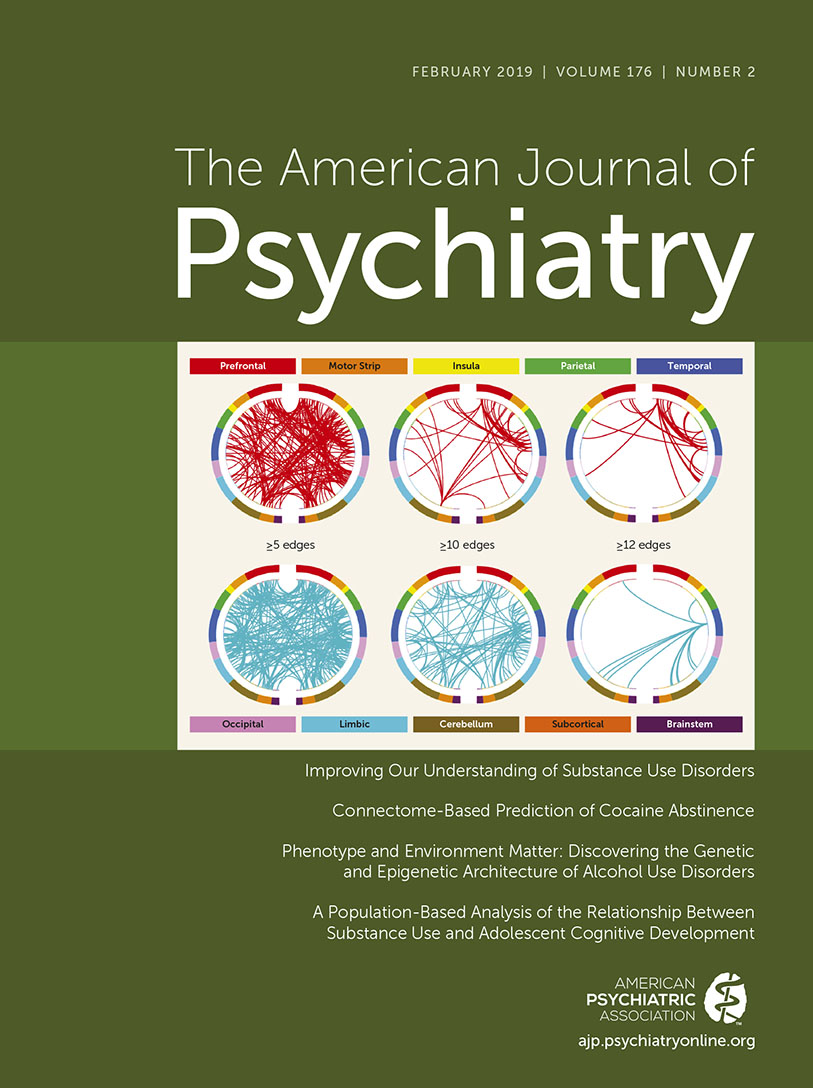Connectome-Based Prediction of Cocaine Abstinence
Abstract
Objective:
The authors sought to identify a brain-based predictor of cocaine abstinence by using connectome-based predictive modeling (CPM), a recently developed machine learning approach. CPM is a predictive tool and a method of identifying networks that underlie specific behaviors (“neural fingerprints”).
Methods:
Fifty-three individuals participated in neuroimaging protocols at the start of treatment for cocaine use disorder, and again at the end of 12 weeks of treatment. CPM with leave-one-out cross-validation was conducted to identify pretreatment networks that predicted abstinence (percent cocaine-negative urine samples during treatment). Networks were applied to posttreatment functional MRI data to assess changes over time and ability to predict abstinence during follow-up. The predictive ability of identified networks was then tested in a separate, heterogeneous sample of individuals who underwent scanning before treatment for cocaine use disorder (N=45).
Results:
CPM predicted abstinence during treatment, as indicated by a significant correspondence between predicted and actual abstinence values (r=0.42, df=52). Identified networks included connections within and between canonical networks implicated in cognitive/executive control (frontoparietal, medial frontal) and in reward responsiveness (subcortical, salience, motor/sensory). Connectivity strength did not change with treatment, and strength at posttreatment assessment also significantly predicted abstinence during follow-up (r=0.34, df=39). Network strength in the independent sample predicted treatment response with 64% accuracy by itself and 71% accuracy when combined with baseline cocaine use.
Conclusions:
These data demonstrate that individual differences in large-scale neural networks contribute to variability in treatment outcomes for cocaine use disorder, and they identify specific abstinence networks that may be targeted in novel interventions.



